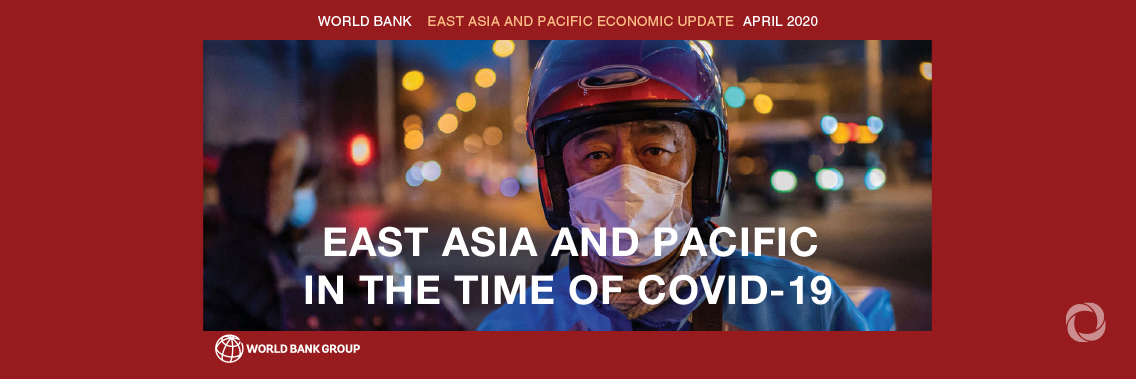The virus that triggered a supply shock in China has now caused a global shock. Developing economies in East Asia and the Pacific (EAP), recovering from trade tensions and struggling with COVID-19, now face the prospect of a global financial shock and recession.
Sound macroeconomic policies and prudent financial regulation have equipped most EAP countries to deal with normal tremors. But we are witnessing an unusual combination of disruptive and mutually reinforcing events. Significant economic pain seems unavoidable in all countries. Countries must take action now – including urgent investments in healthcare capacity and targeted fiscal measures – to mitigate some of the immediate impacts, according to East Asia and Pacific in the Time of COVID-19, the World Bank’s April 2020 Economic Update for East Asia and the Pacific.
In a rapidly changing environment, making precise growth projections is unusually difficult. Therefore, the report presents both a baseline and a lower case scenario. Growth in the developing EAP region is projected to slow to 2.1 percent in the baseline and to negative 0.5 in the lower case scenario in 2020, from an estimated 5.8 percent in 2019. Growth in China is projected to decline to 2.3 percent in the baseline and 0.1 percent in the lower case scenario in 2020, from 6.1 percent in 2019. Containment of the pandemic would allow for a sustained recovery in the region, although risks to the outlook from financial market stress would remain high.
The COVID-19 shock will also have a serious impact on poverty. The report estimates that under the baseline growth scenario, nearly 24 million fewer people will escape poverty across the region in 2020 than would have in the absence of the pandemic (using a poverty line of US$5.50/day). If the economic situation were to deteriorate further, and the lower-case scenario prevails, then poverty is estimated to increase by about 11 million people. Prior projections estimated that nearly 35 million people would escape poverty in EAP in 2020, including over 25 million in China alone.
“Countries in East Asia and the Pacific that were already coping with international trade tensions and the repercussions of the spread of COVID-19 in China are now faced with a global shock,” said Victoria Kwakwa, Vice President for East Asia and the Pacific at the World Bank. “The good news is that the region has strengths it can tap, but countries will have to act fast and at a scale not previously imagined.”
Among the actions recommended by the report are urgent investments in national healthcare capacity and longer-term preparedness. The report also suggests taking an integrated view of containment and macroeconomic policies. Targeted fiscal measures – such as subsidies for sick pay and healthcare – would help with containment and ensure that temporary deprivation does not translate into long-term losses of human capital.
The report calls for international cooperation and new cross-border public-private partnerships to ramp up the production and supply of key medical supplies and services in the face of the pandemic, and to ensure financial stability in the aftermath. Critically, trade policy should stay open so medical and other supplies are available to all countries, as well as to facilitate the region’s rapid economic recovery.
The report also highlights the substantially higher risk of falling into poverty among households dependent on sectors that are particularly vulnerable to COVID-19 impacts, such as tourism in Thailand and the Pacific Islands, manufacturing in Cambodia and Vietnam, and among households dependent on informal labor in all countries.
Due to the COVID-19 pandemic, economic circumstances within countries and regions are fluid and change on a day-by-day basis.
Original source: World Bank
Published on 30 March 2020

